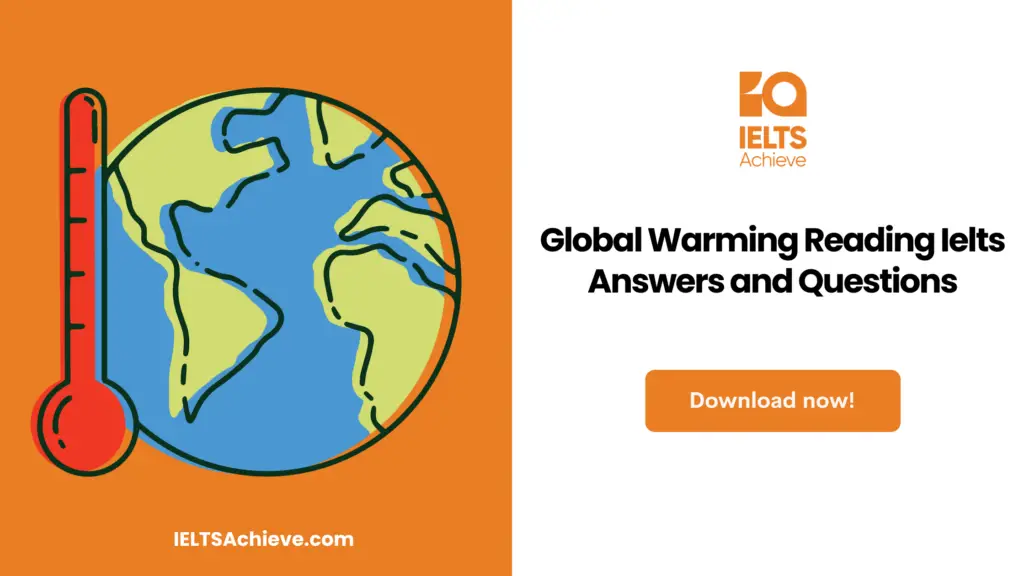The Blog post contains the following IELTS Reading Questions:
- IELTS Reading Multiple choice questions
- IELTS Reading Sentence Completion
- IELTS Reading Table completion
Stay informed and prepared for success – Explore our comprehensive Reading Test Info page to get valuable insights, exam format details, and expert tips for mastering the IELTS Reading section.
IELTS Reading Passage – The Container trade

The Container Trade
The shipping container is one of the mainstays of international trade. The globalised modern economy depends on the rapid and efficient movement of goods that containerisation allows. In many ways it was the advent of the container that allowed this globalised economy to develop.
Invented during World War two as an efficient method of moving equipment to the front lines, there are now at any one time up to 15 million containers being used to transport goods on land and sea or waiting to be filled at factories and ports. They are vital in the supply chain and have allowed the added efficiency of “just in time” inventory management, where companies no longer keep large warehouses of stock or parts, but rely on the ability to quickly order what they want from their suppliers. It is estimated that since the 1980s the ratio of inventory to GDP in American business’ has fallen from 25% to 15%. Altogether total business inventory in the US is estimated at $1.5 trillion, without “just in time” management methods this might be as much as $2.5 trillion.
This means that companies rely more and more on the prompt delivery of parts from their suppliers to fulfill orders. This is particularly true of industries such as computer manufacture, which no longer make all the parts of the products that bear their names, but instead out source, often to suppliers half way around the world. American computer manufacturers are, for example, increasingly dependent on Asian microchip manufacturers in countries such as Taiwan and Thailand. An example of the kind of problems any disruption to the supply chain causes came after the September 11 attacks in the US when the Canadian border was shut for just two days causing chaos in the Detroit car industry, which relies on a regular flow of parts from Canada.
There are three main flows of sea borne cargo: trans-Pacific, trans-Atlantic and Europe-Far East. The trans-Pacific route is by far the largest flow. At 11 million TEU (“twenty foot equivalent units”) a year, it is almost twice the volume of Europe-Far East trade and three times the size of trans-Atlantic traffic. During the 1990s, during America’s boom years, the trade of all the routes grew enormously and this led to more and larger ships being built. The container fleet grew by 12% in 2001. Until then, a container ship commonly carried 600 TEU, during the 1990s ships were being build that could carry up to 8000 TEU. However after the 1990s there was a dramatic fall off in trade. Trans-Pacific trade, for example, fell to 50% of its 1990s high.
This down turn is being handled by the shipping alliances which manage the global trade. These large organizations are responsible for maintaining the fleets and seeing that the flow of goods is uninterrupted. This is a job that governments feel that the regular and reliable flow of trade is so important that in many cases the shipping alliances are exempt from anti-trust and monopoly laws. Their response has been to cut services, rest some of the older ships and share the burden amongst themselves.At first, containers reduced theft as it was more difficult for casual thieves to get into the containers. However, criminal gangs soon saw the potential for taking whole containers. This became a profitable crime as the average value of a container grew to $500,000 by the 1980s. Criminals also benefited from the convenience of containers when using them to transport drugs, illegal immigrants or other illegal goods. Measures to combat this, including stronger locks and preference schemes for shippers who have anti-theft programmes, have had some success, but crime is a constant menace to the container trade.
Increasingly, the huge number of containers and their self-contained and enclosed nature has been raising worries about their possible use by terrorists. In fact, possible terrorists have already been found hiding in containers. This is particularly worrying considering that only 2% of containers are inspected. Containers are also extremely difficult to track and monitor. This is because they pass through so many countries and jurisdictions and because they can travel on both land and sea. Each transaction involving a container can involve as many as 25 different parties and generate between 30 and 40 documents. For a ship carrying 600 TEU this would result in approximately 4000 documents. The sheer scale of the information involved makes tracking containers a daunting task. Screening them to determine the contents is another solution that would take a great deal of effort because of the large numbers of containers. Additionally, it might cause delays in delivery that would disrupt international trade and industry out of proportion to the good the searches do.
For the foreseeable future, there would seem to be no alternative to containers and their use is bound to grow. They are one of the cornerstones of global trade, but many yet cause problems their inventors never envisaged.
Unlock your full potential in the IELTS Reading section – Visit our IELTS Reading Practice Question Answer page now!
Recommended Questions:
Renewable Energy IELTS Reading Question with Answer
The Container trade Reading Questions
Questions 1 and 2
Choose TWO letters A – E.
The invention of containers…
A resulted from the efficient movement of goods.
B led to more global trade.C was initially for military purposes.
D came just in time for many managers.
E relied on the ability to receive orders quickly.
Ready to improve your performance in Multiple Choice Questions (MCQs)? Click here to access our comprehensive guide on how to tackle MCQs effectively in the IELTS Reading section.
Questions 3 and 4
Choose TWO letters A – E.
Containers are important because they…
A prevent the need for companies to hold large amounts of stock.
B increase the amount of business inventory.
C make trade between countries on different sides of the world easier.
D regularly supply manufactures in Canada.E reduce the amount of out sourcing needed by companies.
Questions 5 and 6
Choose TWO letters A – E.
The Trans-Pacific trade route…
A has nearly double the amount of trade as that of the Europe-Far East trade route.
B had its container fleet increase by 12%.
C sparked the boom years of the 1990s.
D usually carried around 600 TEU.E has witnessed a substantial decrease in container trade.
Questions 7 – 10
Complete the table below.
Use NO MORE THAN THREE WORDS from the reading passage for each answer.
Write your answers in the boxes.
| CAUSE | EFFECT |
| a sharp fall in container trade | shipping alliances (7) old ships |
| originally difficult to get into containers | A drop in (8) |
| vast numbers of containers, which are relatively secure | Concerns over (9) |
| Containers must pass through many countries and involve a vast amount of paperwork. | Containers are… (10) … |
Boost your performance in Summary, Notes, Table, and Flowchart Completion tasks. Click here to explore our detailed guide and learn how to effectively complete summaries, notes, tables, and flowcharts in the IELTS Reading section.
Questions 11 – 12
Complete the sentences below using words taken from the reading passage.
Use NO MORE THAN THREE WORDS fore each answer.
Write your answers in boxes 11 – 12 on your answer sheet.
11. The benefits of searching containers would be outweighed by the negative impacts on worldwide trade and industry due to the
12. The inventors must never have imagined that containers would
Unlock your full potential in the IELTS Reading section – Visit our IELTS Reading Practice Question Answer page now!
Recommended Questions:
Renewable Energy IELTS Reading Question with Answer
The Container trade Reading Answers
1. Answer: B
2. Answer: C
3. Answer: A
4. Answer: C
5. Answer: A
6. Answer: E
7. Answer: rest some
8. Answer: theft
9. Answer: use by terrorists
10. Answer:difficult to track
11. Answer: delays in delivery
12. Answer: cause problems

We hope you found this post useful in helping you to study for the IELTS Test. If you have any questions please let us know in the comments below or on the Facebook page.
The best way to keep up to date with posts like this is to like us on Facebook, then follow us on Instagram and Pinterest. If you need help preparing for the IELTS Test, join the IELTS Achieve Academy and see how we can assist you to achieve your desired band score. We offer an essay correction service, mock exams and online courses.


